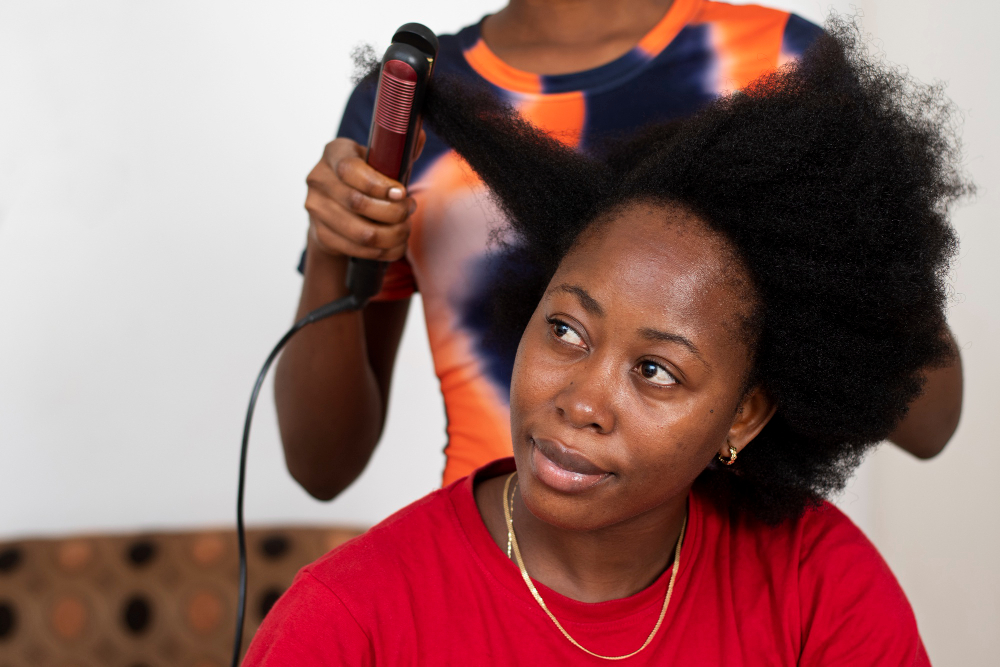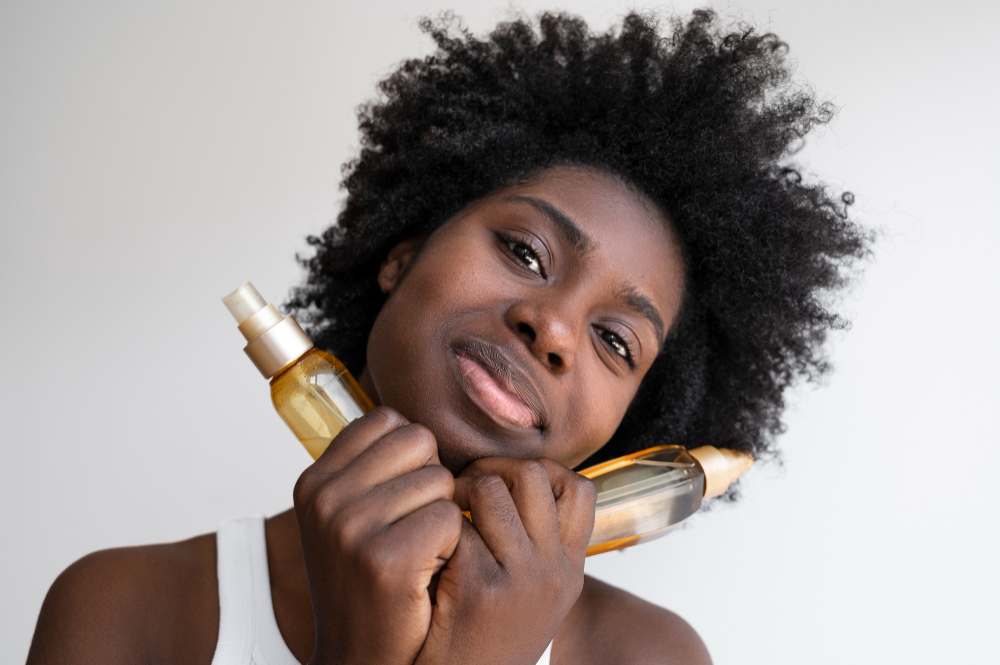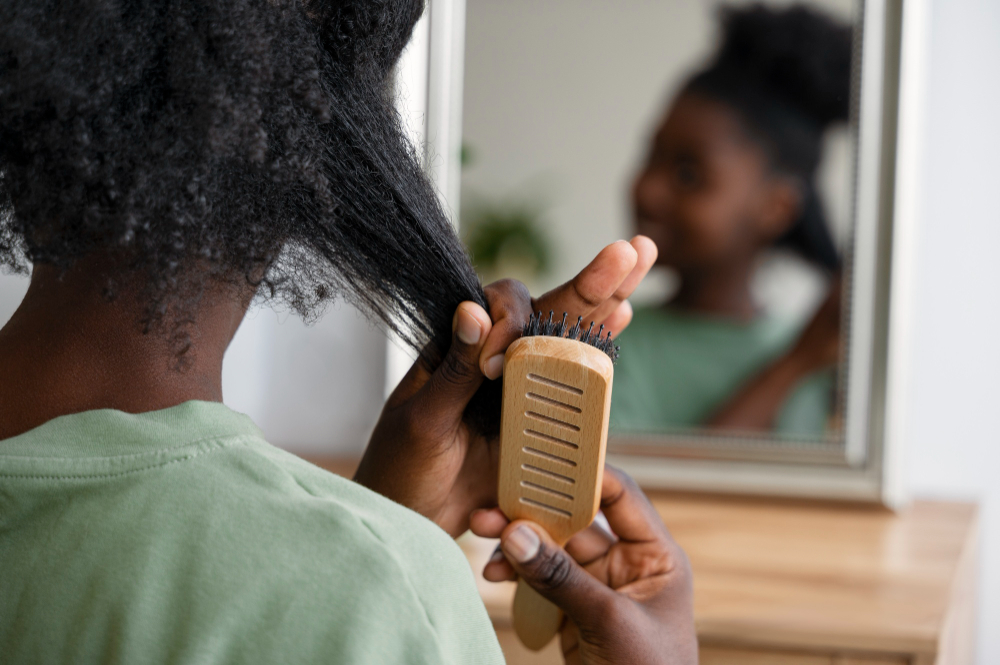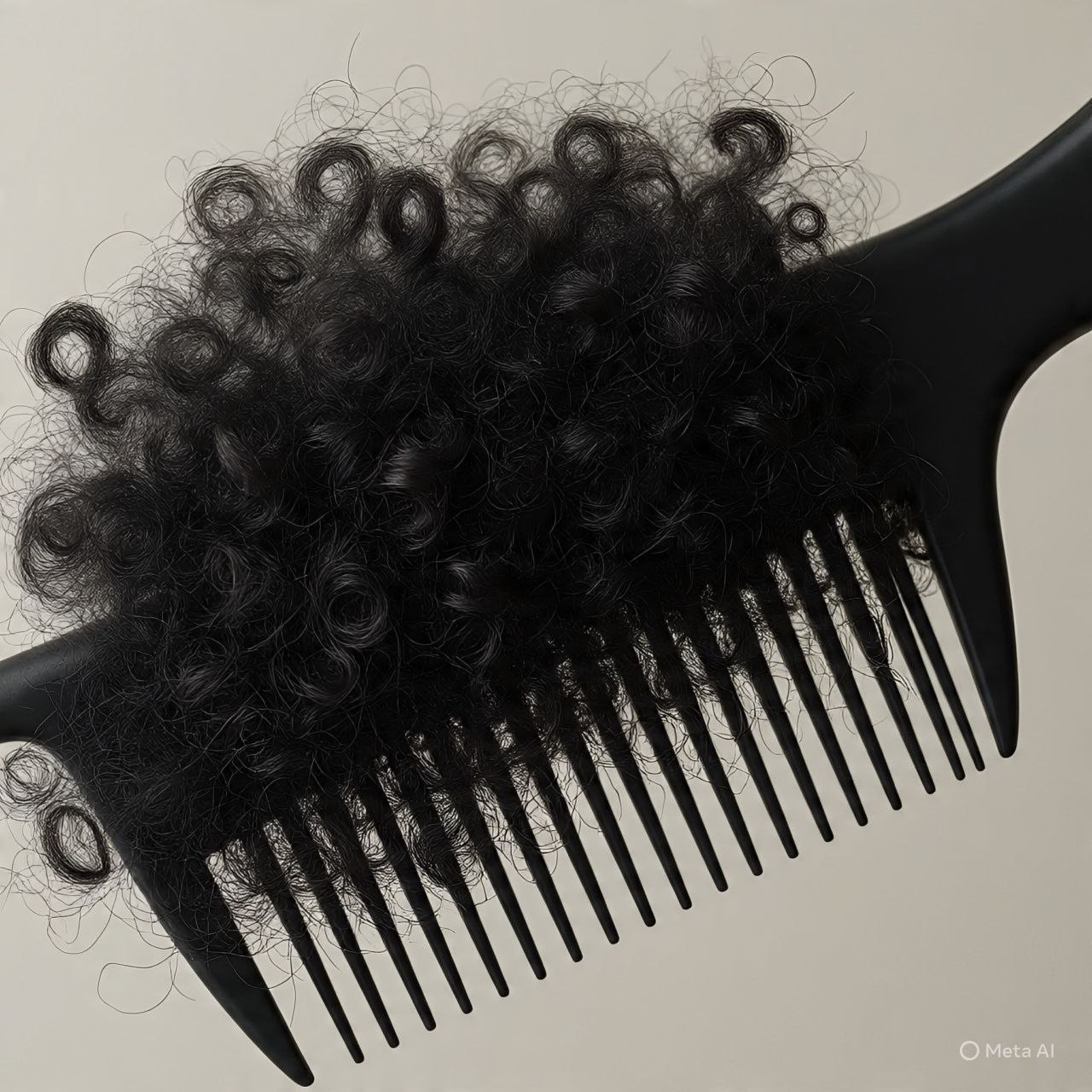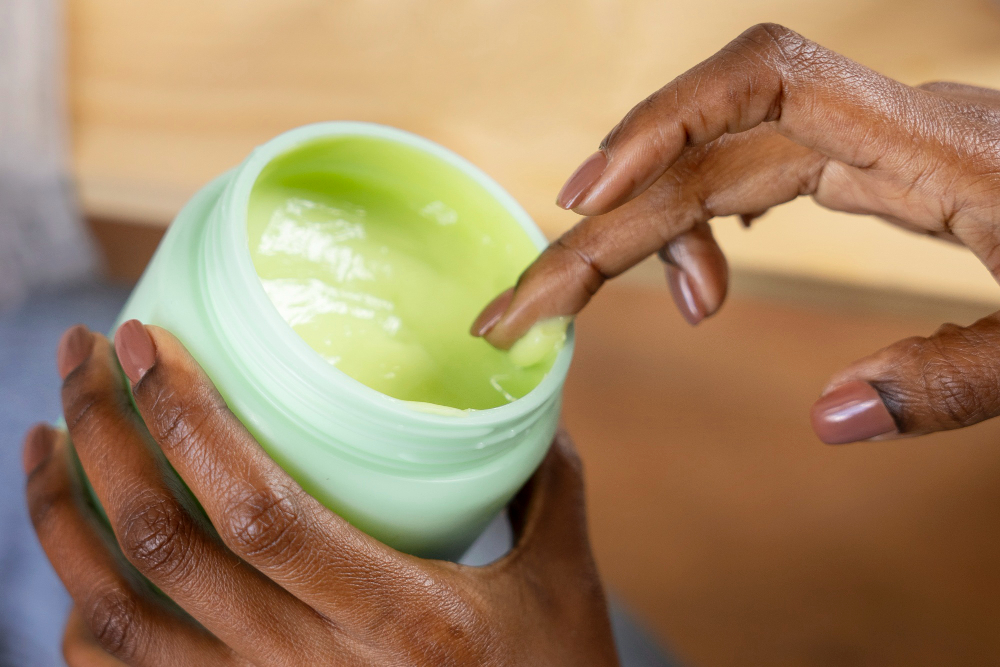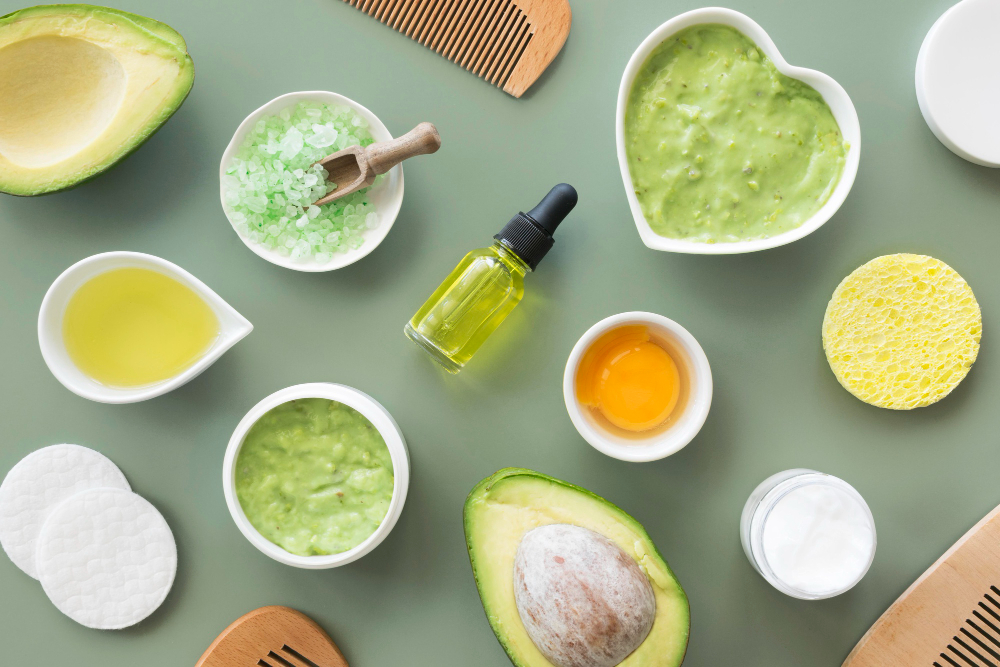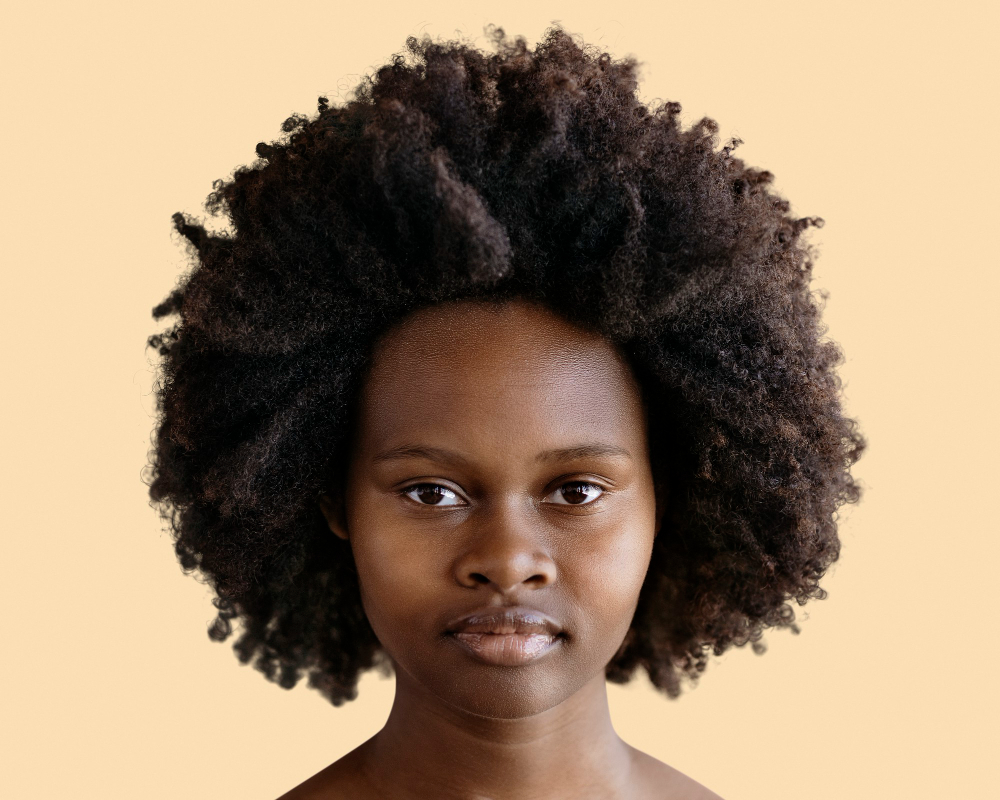Trending Article · 15 mins read
Transitioning to Natural Hair: What You Need To Know
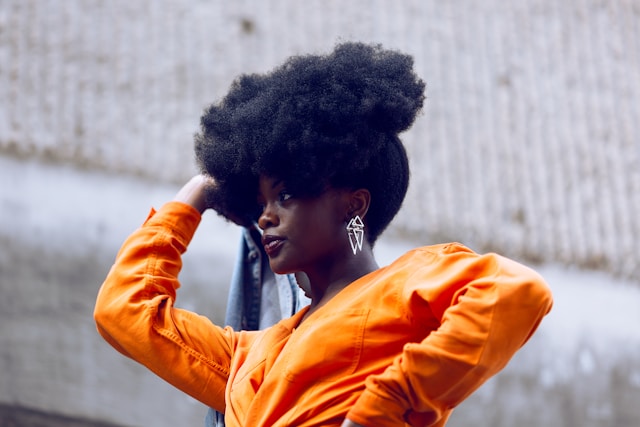
Transitioning to natural hair is a challenging but rewarding journey. You might have heard some ladies say, “Dealing with my natural hair is so stressful, relaxing my hair is so much easier”. Is it?
Suppose you are in the process of transitioning or considering transitioning. In that case, this article promises to provide you with all the information you need to stick with your decision and enjoy your natural curls.
Let's begin with a little definition of transitioning.
What Does Transitioning Mean?
This refers to going from relaxed, straight hair to having hair that grows from the root of your head curly or coily and unrelaxed.
The period from leaving relaxed hair to growing unrelaxed hair is the transition period.
This period usually takes a while, because you wait for the hair underneath (unrelaxed) to grow out while still keeping the relaxed hair. Depending on how your hair grows or how long it is, it can take as long as 6 months.
This article is for those taking time to transition, not just getting a big chop immediately.
When you transition to natural hair, there is a line of demarcation. The line of demarcation shows where the relaxed hair starts and where the current unrelaxed hair length stops.
Note: When we say "natural hair” in this article, we are referring to unrelaxed hair.
What to Expect When Transitioning to Natural Hair
Some things to expect when transitioning to natural hair are:
1. Two different strand textures
Remember the line of demarcation?
Yeah, it's a clear show of how different the texture of your natural hair (curly or coily) is from the relaxed one (straight) Some people might think their hair looks damaged, oftentimes that's not the case; it's just the stark difference in the look of both hair strands.
So expect to see two different hair strands on your head.
2. Dense roots while transitioning to natural hair
You might notice that the roots of your hair are dense, thicker and harder to comb.
This is largely due to the curls of your natural hair. Since the hair is short and growing, the curls may just stay rounded at the base, making it difficult for a comb to pass through at that time.
This doesn't mean you can't comb your hair, it just means you have to moisturise and be more gentle, we'll talk more on this in the next heading.
3. Shrinkage and breakage while transitioning to natural hair
Natural hair, especially type 4 hair, shrinks a lot. So expect to see that while transitioning. Shrinkage is also a major culprit for what we talked about in number 2.
But you know the beauty of it? Shrinkage is a sign of healthy hair😂. So, don't panic when your hair shrinks.
For breakage, it is normal to shed a few strands as hair grows. However, if your hair comes off easily, even without combing, then something is wrong.
So take note of how much hair you shed when you comb your hair or when you style it. If it's an uncomfortable amount, speak to a trained natural hair stylist to help you figure things out.
4. Rough edges might be a thing
Now, most naturals won't call their edges rough, I mean it adds to the uniqueness of going natural.
But if you are the kind of girlie who likes her edges all sleek and laid down or laid back (which relaxers do), you might find it a little difficult to accept the rough edges 😂.
But not to worry, with the right edge control and satin scarf 😉, you can get your natural hair edges to sleek down.
Let's talk about what you’ll need on this transition journey home.
9 Things You Need While Transitioning to Natural Hair
1. Patience and Courage to stick with your decision
Transitioning takes time, and waiting for your natural hair to grow out and get to a length you can rock without feeling different requires a lot of patience.
Patience is especially necessary if you have long, relaxed hair, and now want to transition. But not to worry, with the right combination of practice and products, you'll have amazing natural hair in no time.
So, what do you need courage for? To stick with your decision to go natural. Most ladies prefer the look of relaxed hair and the “manageability”.
Said ladies may not understand why you want to “stress” yourself going natural. To stick with your decision and embrace your natural hair look, you need courage.
2. The right products
For this one, we mainly encourage you to keep it simple. Don't feel overwhelmed and confused by the vast array of products you see on the shelf.
Since you are new to the natural hair lifestyle 😂, all you need are the essentials.
These include:
- A good shampoo- to wash your hair
- A moisturizing deep conditioner- to nourish and moisturise your hair
- Good hair oils (this depends on the characteristics of your hair)- to seal in moisture and keep shine.
- A great Leave-in conditioner- to keep your hair moisturized after washing
- An amazing hair butter or hair cream- this is like hair food for your hair after washing
- A nice fitting satin scarf or bonnet- to keep your strands away from friction and preserve moisture
- Wide-toothed comb- mainly for detangling without damaging your hair styles and to reduce breakage
- Ouchless hairbands- to hold your hair in place when you style. They are a milder replacement for rubber bands.
You can begin with these essentials, and as you navigate your journey, you add more products and tools.
3. Moisturize because manageable strands depend on it!
Healthy natural hair thrives on moisturizing frequently. Dryness will only frustrate you as your hair transitions. So, keep every hair on your head moisturized (yes, including the relaxed hair).
When you moisturize properly, you find it easier to manage your roots and your comb might have an easy time passing through your curly strands.
4. Deep condition for better hair
Deep conditioning is one step in natural hair care that is non-negotiable. The benefits are too good to miss.
Unless your hair is damaged and that's the reason for your transition, it's best to start with a moisturizing deep conditioner. Moisturizing deep conditioners supply your hair with the nutrients it needs to stay supple and grow healthy.
5. Keep your trimming appointments
Transitioning requires frequent trimming. Taking time to gradually trim off the relaxed part as your natural hair grows out.
With every trim, you come closer to having a full head of natural hair. Plus, keeping your appointments might help minimize breakage and split ends that you might experience.
If you'd like to skip the slow pace of transitioning, you can consider a big chop at once.
6. No heat styling
Natural hair care requires some sacrifice, and one of them is limiting if not even eliminating, direct heat styling. Overtime heat styling damages your hair and curl pattern, with heat protectants, the damage is minimal, but still there is damage.
So, take some time off heat styling and watch your hair flourish and your curls or coils thrive.
7. Detangle gently while transitioning to natural hair
To preserve hair length and reduce breakage, how you detangle is important. Take your time to gently detangle your hair.
To detangle, you can use flax seed extract, a conditioner with good slip or even okra or aloe Vera and apply to your hair.
The pattern of natural hair curls or coils makes it easy to snap when it's dragged, so you need to detangle gently, hence the need for the wide-toothed comb or your fingers.
Please remember, detangling should be done on damp hair, never dry hair. You also find it easier to detangle your hair in sections.
8. Protective styles are best for transitioning to natural hair
Protective styles prevent you from over-manipulating your roots, and growing natural hair, which in turn gives it time to breathe and grow.
These styles are great for length retention as well, so you don't lose the hair you are growing out.
Remember to keep the areas around your edges and nape free, not too tight for discomfort.
9. Document your transition journey
Whether you take pictures, make videos of your process, or write your journey in a hair diary, just document your process.
Apart from helping you track your journey, there is a sense of accomplishment and joy that comes with seeing how far you've come. It's also a great way to celebrate your hair wins. So, don't miss any chance to document your hair journey.
Wrapping up
Transitioning to natural hair requires patience and consistency, amongst other things we mentioned.
So, take your time and enjoy the journey, and you go. But who says you have to do it alone? Meet other ladies on the same journey as you and share your experiences. Join the HairTalk community
Feature image: Photo by Ayo Ogunseinde on Unsplash
